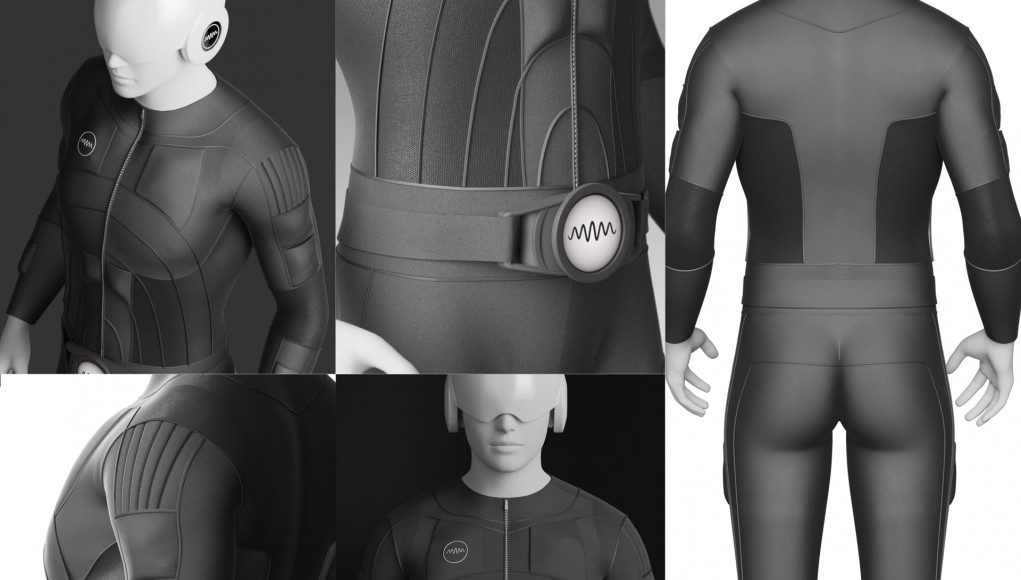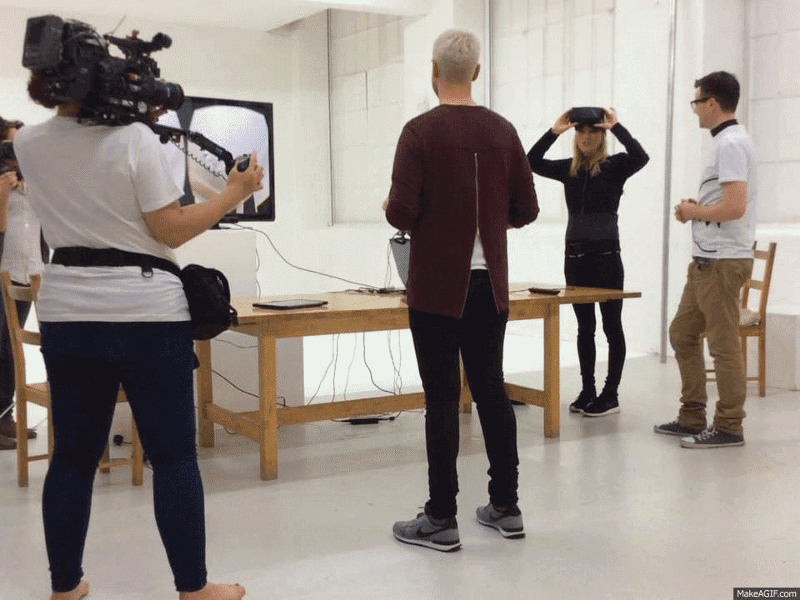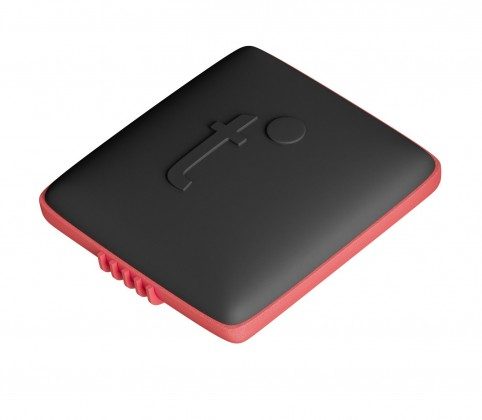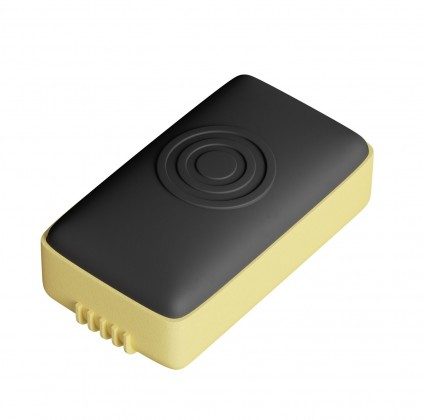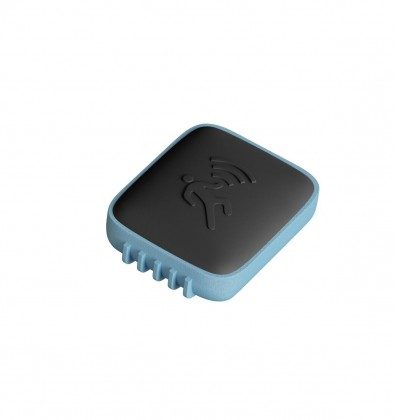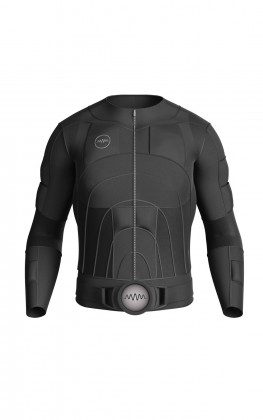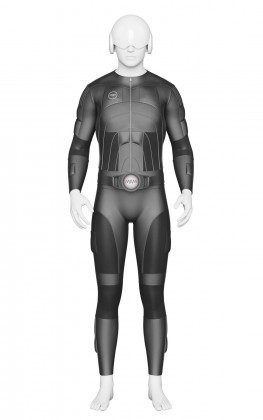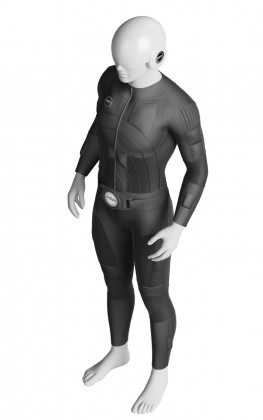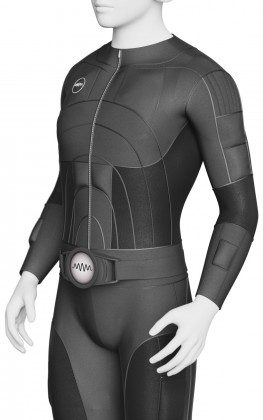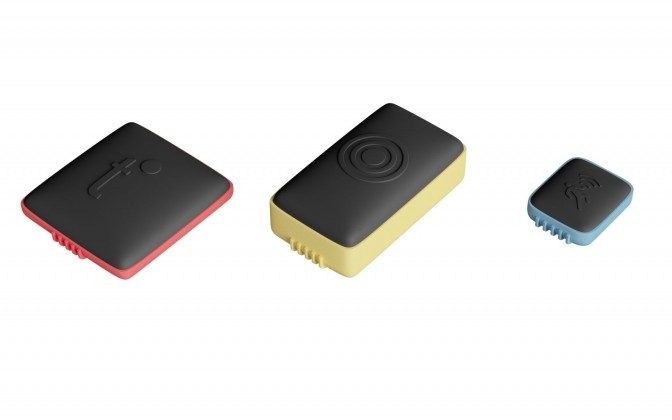A UK based company company who has integrated EMS (Electro Muscular Stimulation) into a wireless suit, they claim is capable of allowing you to feel sensations ranging from a cool breeze to the impact of a bullet.
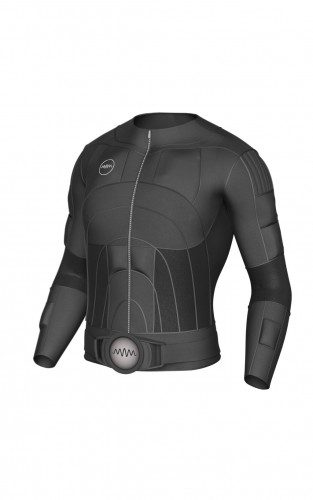 VR headsets are, at least for 2016, somewhat of a known quantity now. Most focus is therefore moving to delivering compelling input solutions that unlock the interactive potential of VR. But what’s missing once that problem is solved. The answer is feedback from that virtual world. The folks at UK based Tesla Studios think they may have the answer – an suit that electrically stimulates your muscles in response to actions or stimuli from the virtual world.
VR headsets are, at least for 2016, somewhat of a known quantity now. Most focus is therefore moving to delivering compelling input solutions that unlock the interactive potential of VR. But what’s missing once that problem is solved. The answer is feedback from that virtual world. The folks at UK based Tesla Studios think they may have the answer – an suit that electrically stimulates your muscles in response to actions or stimuli from the virtual world.
Teslasuit uses EMS (Electro Muscular Stimulation) fed to your nervous system via a skintight suite covering the user’s body. The latest prototype delivers a simulation of a sense of touch or pressure on your skin, so if someone pokes you in VR, you feel it at the corresponding point on your body. The system was recently demonstrated as part of a TV documentary, where UK celebrity Sara Cox (wearing the suit) was able to ‘feel’ a hug from a motion captured demonstrator from across the room.
Not only that, but the suite is also a temperature control device, so in combination with the EMS feedback, the suite can also simulate temperature changes in response to environmental effects in the VR experience.
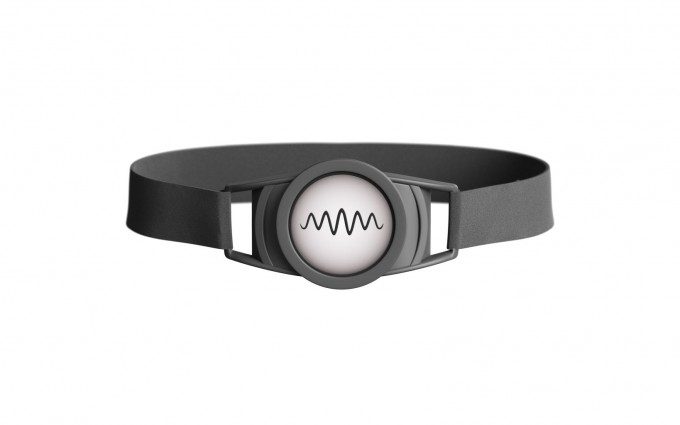
The team claim the system is compatible with all VR headsets, but we’re currently waiting on answers to precisely what this means in practice. According Tesla Studios, the suit itself is powered by a suit-mounted processing unit, packing a Quad Core 1Ghz processor and 1GB RAM and a 10000mAh battery. The unit runs a proprietary OS called Tesla OS. The processing units are designed to be modular, with Haptics, Motion Capture and Climate Control all receiving their own units, linked to the main processing unit – worn on the belt.
The unit is apparently also capable, once the Mocap unit is fitted, of capturing the user’s body motion, feeding it directly to the application in real-time. What kind of fidelity is possible from what is presumably an IMU based system remains to be seen – we’ll report back with some more details on this soon.
It’s the kind of thing that genuinely sounds like the stuff of science fiction. Nevertheless, Tesla Studios says it’s on track to bring its second, 52 channel prototype suits to Kickstarter from tomorrow (1st January).
No details on cost is currently available, but the feedback videos included on this page certainly look promising. Questions remain around VR headset integration and how software interfacing, which will presumably have to be specifically integrated to get the most out the the hardware, will work.
Until we’ve managed to try it out for ourselves of course, we’ll reserve judgement. But we’re very excited at the prospect of technical like this approaching reality in any form.

